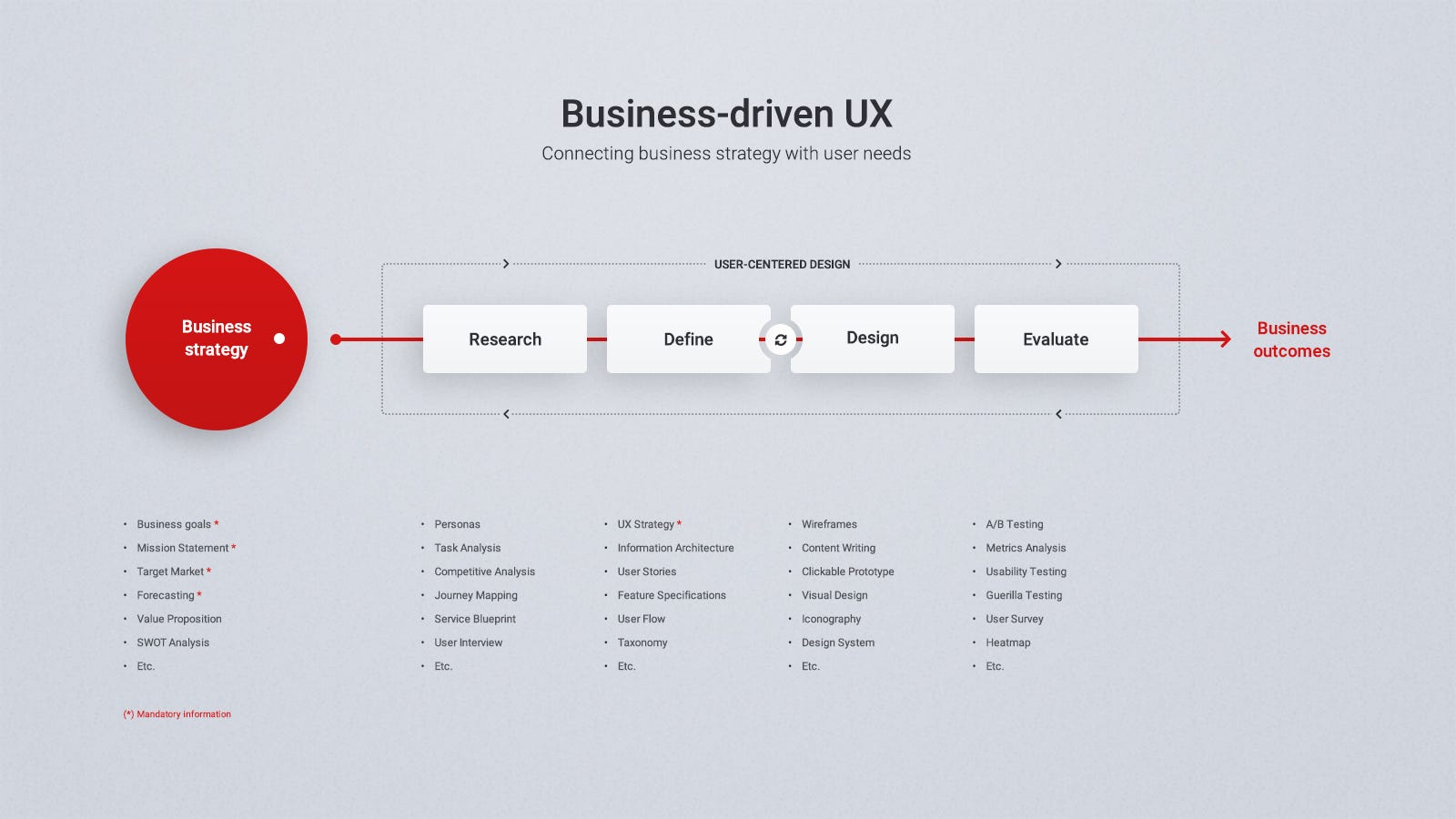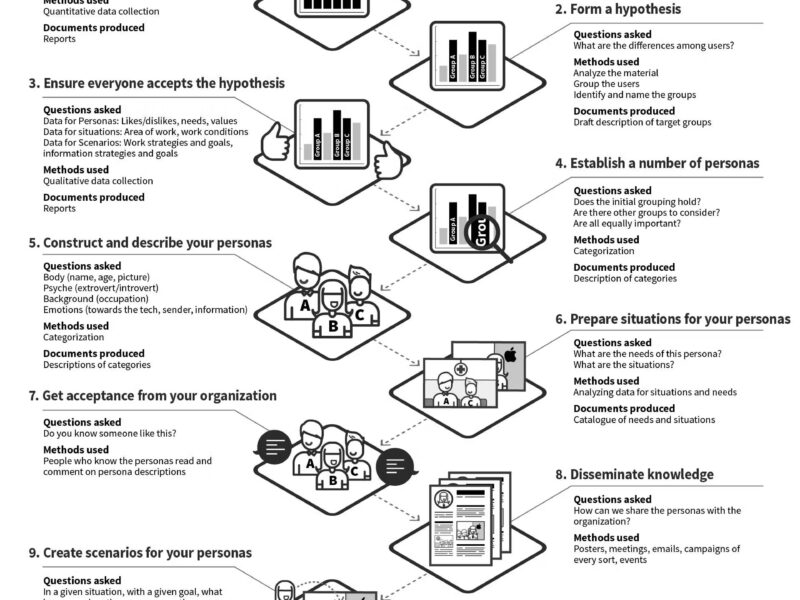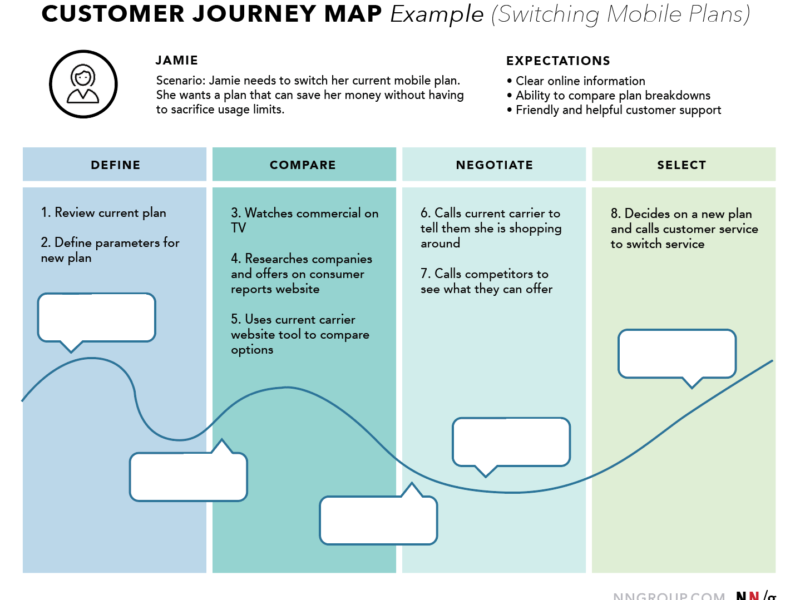Connecting Business-Driven UX Strategy with User Needs
In the fast-evolving digital landscape, achieving an optimal user experience (UX) is no longer just about meeting user needs—it’s about aligning these needs with overarching business goals.
This comprehensive guide explores the intricate relationship between Business-Driven UX and UX design, providing actionable insights to bridge the gap between user-centric design and business-driven objectives.
The Foundation of Business-Driven UX
Understanding the Disconnect
Business goals often find a place in the design process, but are they adequately identified and leveraged? More importantly, how does a business strategy directly influence the design process? Without aligning design efforts with business strategy, even the most user-friendly interfaces can fail to deliver measurable business outcomes.
The User Experience Misconception
While it is widely accepted that the essence of exemplary UX lies in meeting user needs, as stated by the Nielsen Norman Group, many real-world decisions prioritize business imperatives over user preferences. Advertising strategies, platform limitations, and user flow restrictions are often at odds with user desires but serve critical business goals like increasing conversion rates or boosting revenue.
The true hallmark of success lies in blending user needs with business strategy to achieve both satisfaction and measurable outcomes.
Reconciling Business and UX Objectives
A Collaborative Challenge
The tension between business and UX teams stems from differing priorities: while the business side emphasizes profitability and growth, UX focuses on usability and satisfaction. To foster productive collaboration, it’s essential to:
- Clearly define the roles and responsibilities of both teams.
- Create an environment that prioritizes mutual respect and shared goals.
Role Clarification
- Business Team: Define business strategies, including goals, mission statements, and target markets. Provide insights and suggestions without imposing specific design decisions.
- UX Team: Translate business goals into user-focused solutions, ensuring the design aligns with strategic objectives while enhancing user satisfaction.
The Five Stages of the Business-Driven UX Process
1. Business Strategy
Before diving into design, gather and document all relevant business information:
- Business Goals: Define clear, measurable, and time-bound objectives.
- Mission Statement: Craft a concise declaration of purpose.
- Target Market: Identify customer segments by priority or profitability.
- Forecasting: Outline short, medium, and long-term projections.
Practical Tools: Leverage platforms like Atlassian Confluence to document and share this foundational information across teams.
2. Research
The research phase intertwines business and user needs:
- Business-Driven Methods: Analyze competitive landscapes, call center reports, product return rates, and conversion metrics.
- User-Centric Methods: Conduct interviews, usability testing, journey mapping, and focus groups.
Case-Specific Insights: Tailor methods to align with specific business goals, ensuring a comprehensive understanding of user behavior and market dynamics.
3. Define
This stage translates research insights into actionable plans:
- Develop a UX Strategy that addresses identified challenges and offers solutions.
- Create documentation such as user stories, flow diagrams, and design specifications to guide the development process.
- Specify web accessibility standards (e.g., WCAG) to ensure inclusivity.
Iterative Process: Continuously update documentation as new insights emerge during subsequent stages.
4. Design
The design stage focuses on creating a tangible user experience:
- Develop prototypes, wireframes, visual designs, and content strategies.
- Integrate accessibility tools to validate compliance with set standards.
Dynamic Updates: Switch between “Define” and “Design” stages as needed to refine and align the user experience.
5. Evaluate
Evaluation ensures that both user needs and business goals are met:
- Qualitative Methods: Conduct usability testing, session recordings, and first-click tests.
- Quantitative Methods: Leverage A/B testing, analytics reviews, and heatmap analysis.
- Monitor Website Speed and accessibility standards to maintain performance benchmarks.
Iterative Refinement: Use evaluation findings to revisit earlier stages, ensuring continuous improvement.
Case Study: Merging User-Centric Design with Business-Driven UX
To illustrate the process, consider an e-commerce platform aiming to reduce cart abandonment rates. The business team identifies a primary goal: increase the conversion rate by 15% over six months. The UX team conducts usability testing to uncover friction points in the checkout process, leading to streamlined navigation and simplified payment options.
Results: A seamless user experience results in higher conversion rates, validating the synergy between business and UX strategies.
Key Takeaways for Implementing Business-Driven UX
- Establish clear roles for business and UX teams to foster collaboration.
- Document business strategies comprehensively, emphasizing measurable goals.
- Prioritize both business-driven and user-centric research methods for holistic insights.
- Develop a structured evaluation plan to track outcomes and iteratively refine designs.
- Embrace tools and methodologies that bridge the gap between user satisfaction and business performance.
Recommended Tools and References:
By embedding business objectives into the core of the UX design process, teams can create experiences that delight users and drive meaningful business results. This dual-focused approach is not just a competitive advantage—it’s a necessity in today’s interconnected digital world.
The image belongs to A guide to Business-driven UX


